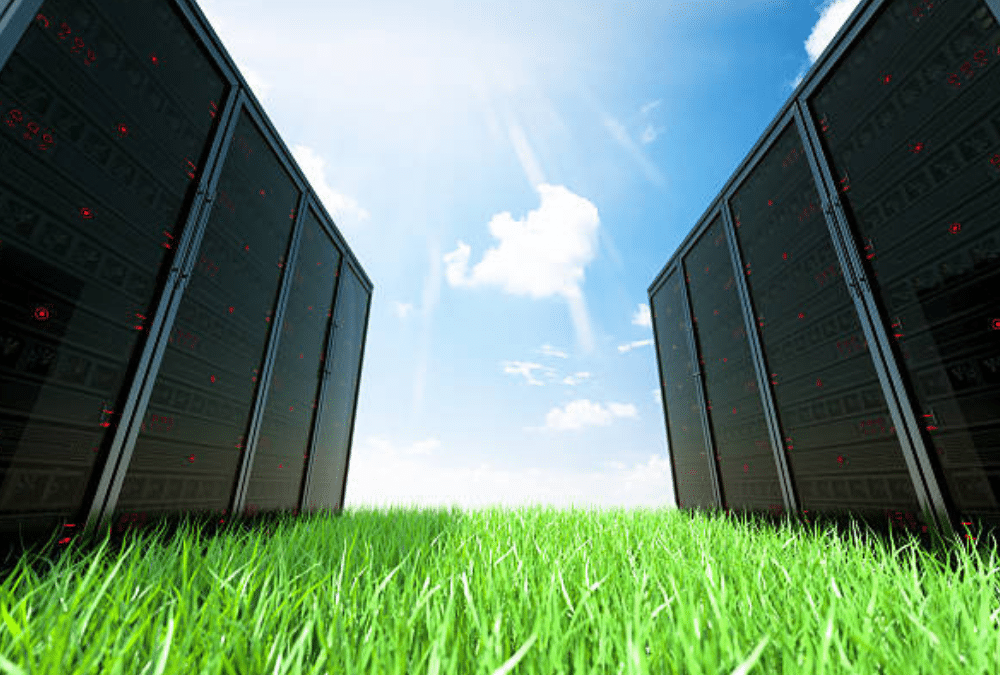The new hosting needs and their integration into a Green IT approach
“Undoubtedly, the issue of hosting stands at the heart of companies’ digital transformation processes. In this context, organizations are increasingly turning to data centers to host their applications, information systems, and data. This has led to an exponential growth of data centers across all regions to meet these emerging needs.”
Morgane CERISIER
Energy Manager & CSR Lead – cegedim.cloud
This trend is accelerating, particularly with the rise of Artificial Intelligence, which is creating new hosting needs. This situation leads us to question the energy consumption and other natural resources required by these facilities, and more broadly, their integration into a Green IT approach, which has now become essential.
Having a broader perspective on the infrastructure
On this point, two approaches must be considered: the construction of new data centers and the refurbishment of existing buildings.
As for new constructions, it is not only a matter of integrating current best practices in terms of energy and environmental efficiency, but also of anticipating future ones! The highly criticized use of drinking water by data centers in recent years is a striking example. Technologies must be deployed to fully embed these facilities into a sustainable Green IT approach: combining different cooling systems (chilled water, adiabatic free cooling, etc.), rack containment, purchasing certified low-carbon electricity, producing local electricity (solar farms), and recovering waste energy (reusing generated heat for heating purposes, etc.). All of this should be managed by intelligent systems that minimize environmental impact by defining the best cooling strategy based on the natural resources available at a given time or in the near future (weather forecasts, electricity production forecasts), as well as the projected consumption of computing power.
The design of these data centers of the future must incorporate a requirement for modularity in the process components, allowing the adoption of new technologies without challenging their overall design—for example, Liquid Cooling, which is increasingly linked to the growing needs of Artificial Intelligence.
In the case of data center rehabilitation, it is necessary to upgrade existing facilities while taking into account their structural specificities and their environment, integrating—wherever possible—all these systems that can make them more efficient.
Managing the Green IT approach with precision
On this point, it is essential to establish dedicated governance to monitor in real time the consumption and performance of data centers: collecting data from all process equipment (transformers, UPS, cooling systems) as well as from hosted IT equipment (servers, etc.), setting up alerts on consumption levels, temperature, and humidity. This approach makes it possible to identify processes that can be optimized. The ISO 50001 standard – Energy Management – is a valuable source of inspiration for embedding a continuous improvement approach in this area.
Moreover, by providing detailed reports on a client’s hosted equipment, it becomes possible to support them in preparing their carbon footprint assessment. In the case of a cloud provider controlling the entire value chain—from the data center to cloud resources—this monitoring becomes a powerful tool, enabling each client to actively contribute to reducing environmental impact by managing their energy strategy.
Equipment Recycling
Finally, it is important to integrate end-of-life management of deployed and used equipment into the Green IT policy. Thus, when infrastructures reach the end of their lifecycle or experience performance degradation, it becomes possible to choose recycling and reuse rather than discarding them. This action can significantly improve the environmental impact of hosting providers.
